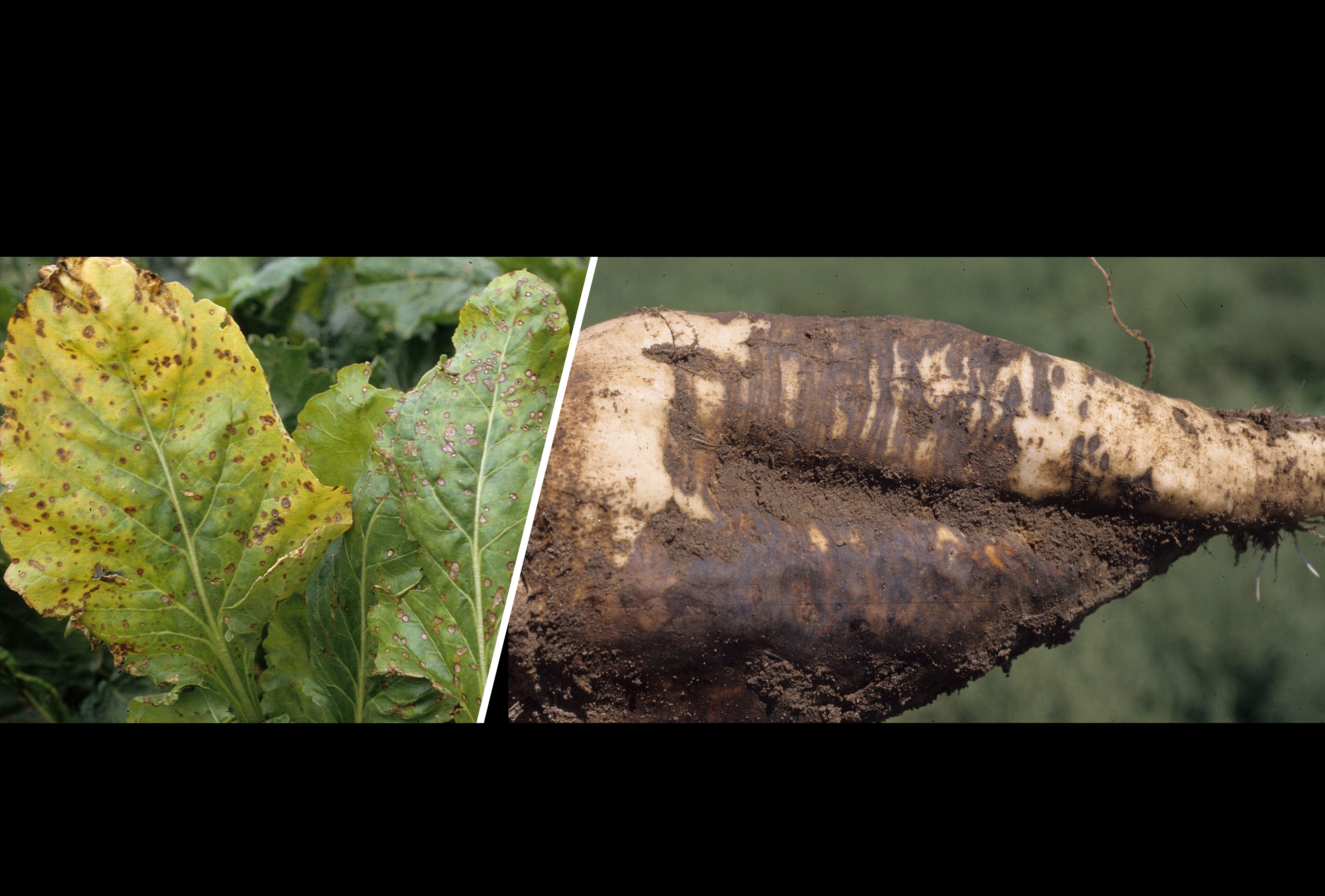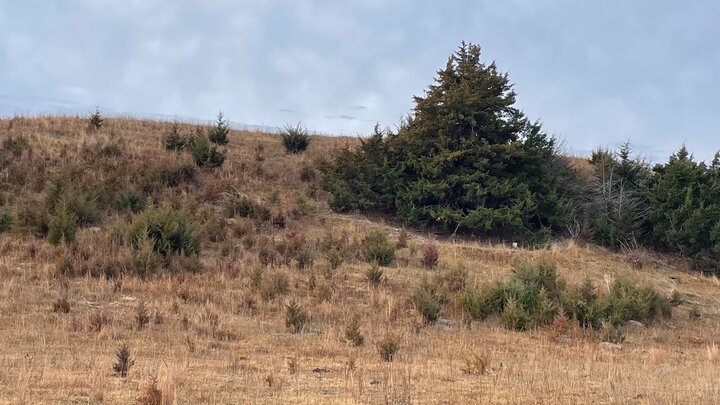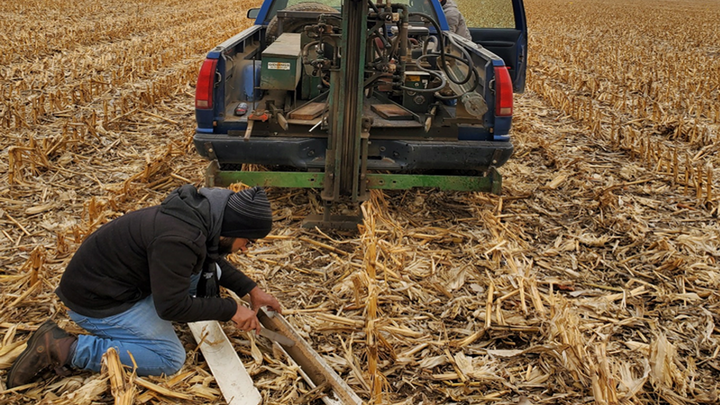By Robert Harveson, Extension Plant Pathologist
Pathogen
Aphanomyces cochlioides (Drechs.) Fungal structures: asexually produced zoospores formed in undifferentiated zoosporangia, and sexually produced oospores. The pathogen has been recently discovered in Nebraska and Wyoming, but has also been reported from production areas in the North Central U.S., eastern Canada, England, Germany, and Japan. Under conditions of high moisture and temperature (75°-80° F), zoospores emerge from the sporangia and encyst in clusters at the tip. The encysted zoospores then release secondary zoospores that reinfect plant roots. A. cochlioides is homothallic, and oospores are formed from the union of oogonia and antheridia.
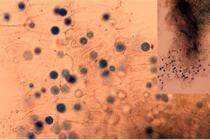
Disease Symptoms
The pathogen causes both a chronic seedling disease known as black root, and a chronic root rot phase that may occur anytime during the season. Symptoms of black root begin as grayish, water-soaked lesions on stems near soil level. The lesions turn dark over time and infection can extend up stems causing them to become black and thread-like (see seedling diseases). Cotyledons seldom wilt before advanced stages, so this is a diagnostic symptom along with the thin, dark stem. The chronic phase is characterized by foliage that wilts, turns a dull green and eventually chlorotic. Plants may recover at night, but are more prone to wilt again during the day. Leaves may also appear scorched and become dry and brittle. Root symptoms begin as yellowish-brown, water-soaked lesions that extend into the interior of the root. As disease advances, lesions become dark brown to black. Infection can occur anywhere on the root, but usually occurs as a tip rot. If environmental conditions become more favorable for plant growth, plants may recover to produce a relatively healthy crop. However, many roots may still exhibit varying degrees of root distortion and/or scarring which are indicative of previous A. cochlioides infections. In severe cases, extent of disease can completely destroy taproots leaving little except for crowns, yet often still may maintain deceptively healthy-looking tops.
Symptoms of Aphanomyces Root Rot:
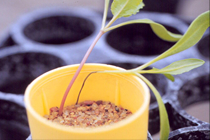
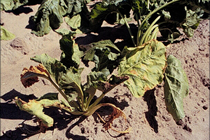
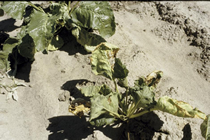
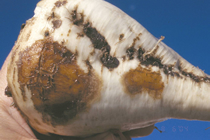
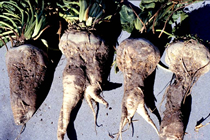
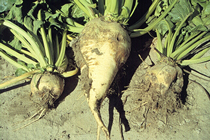
Favorable Environmental Conditions
Disease is initiated when soils become warm and wet. The fungus survives as oospores and may germinate and infect plants directly, or through the production of motile zoospores. Black root does not result in pre-emergence damping-off, but can affect stands several weeks after emergence. If conditions for disease development become unfavorable, seedlings often recover, but are more susceptible to breakage by wind because of the thin, weakened stems. The chronic root rot phase also requires warm and moist soils. Infection has been reported in soils ranging from 64° to 90° F, but optimum is around 77° F. If soils drain rapidly or cool, infected plants may recover, but still may be stunted, distorted, or produce dry, scabby lesions.
Management
Genetic Resistance
Some tolerant cultivars are available for the Central High Plains, but they do not provide complete immunity. Other cultivars are available for with higher levels of resistance in other regions where the disease is a greater problem such as the Red River Valley of Minnesota and North Dakota.
Cultural Practices
Cultural practices that attempt to modify the soil environment to the benefit of the plant and the detriment of the pathogen are effective in reducing disease severity. These techniques include planting early into cool soils, and avoiding unnecessary irrigations. Controlling several weeds that can serve as hosts such as pigweed, kochia, and lambsquarters will also help to avoid large population increases in soils.
Chemical / Biological Control
Seed treated with the fungicide Tachigaren will protect seedlings from the black root phase. This will last for 4-6 weeks, but will not provide season-long protection. No fungicides are available for the chronic root rot phase later in the season.
More Information
For additional information, see the UNL Extension NebGuide, Aphanomyces Root Rot of Sugar Beets (G1407).
